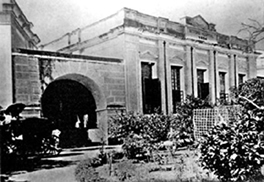Mitford Hospital
Mitford Hospital established in 1820, named after Sir Robert Mitford, Collector of Dhaka and also a long serving judge of the Provincial Court of Appeal. During his time there was an alarming cholera epidemic and at the height of it 150 to 200 persons died daily in Dhaka. Medical facilities were inadequate. Sir Mitford was distressed to see the suffering of the people. Before his death in England in 1836, he bequeathed the bulk of his property (about Rs 800,000) to the government of Bengal for benevolent works in Dhaka including building of a hospital.
This was disputed by his successors but finally, in 1850, the Chancery Court partially decreed in favour of the Bengal Government, by virtue of which it received Rs 166,000. With this fund the hospital was started in 1858 on its present site, then known as 'Katra Pakurtali', Babu Bazar. Prior to this, the site was occupied by a Dutch kuthi (house).

From the inception, the hospital was under the administration of a board accountable to Dhaka Municipality. A female ward was established in the hospital in 1882 with generous donations from Nawab khwaja ahsanullah of Dhaka and Raja Rajendra Narayan Roy of Bhawal. Nawab Ahsanullah also donated Rs 50,000 to set up Lady Dufferin Hospital within the same compound in 1888-89. A European ward was established in the hospital in 1887, and in 1889-90 Raja Srinath Roy of Bhaggyakul set up an eye ward at a cost of Rs 3,00,000 in memory of his mother. It got the recognition of a first grade hospital in 1917.
The hospital, in addition to different wards, accommodated lecture halls, dissecting rooms, and an out-patients' department. It remained a general hospital and did not undergo much change in size and types of services over time. It occupies an oblong area of about 12.8 acres of land on the river bank and the hospital complex comprises of more than fourteen blocks of no particular architectural significance but historically important and eventually of utilitarian character. Most of the blocks were originally single-storied and now have been raised to four storeys. The hospital provides both indoor and outdoor treatments as well as pathological and diagnostic services. It serves about 1,000 outdoor patients daily. As of 1999, the hospital had 600 beds, of which 240 were paying. [Shahida Alam]
